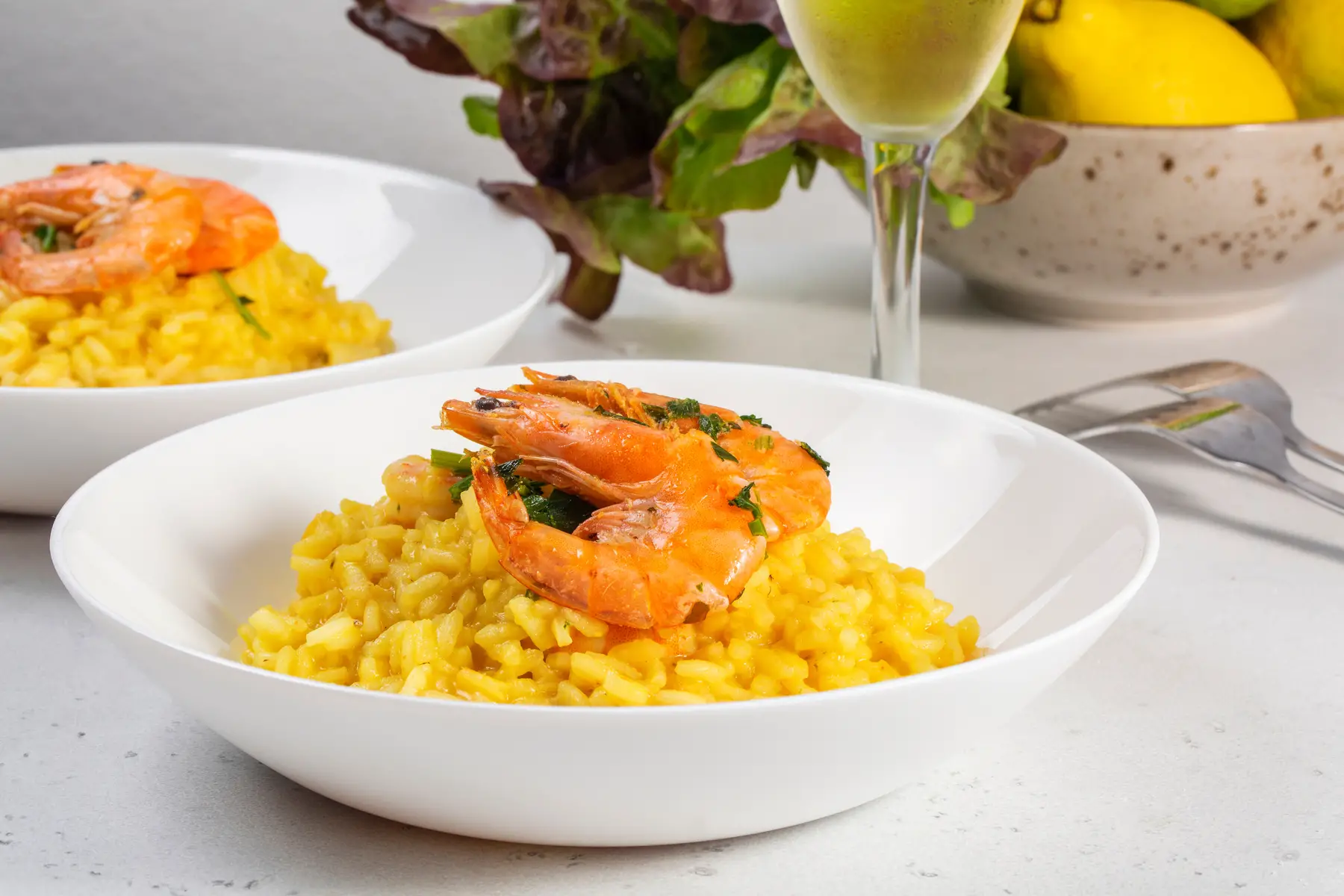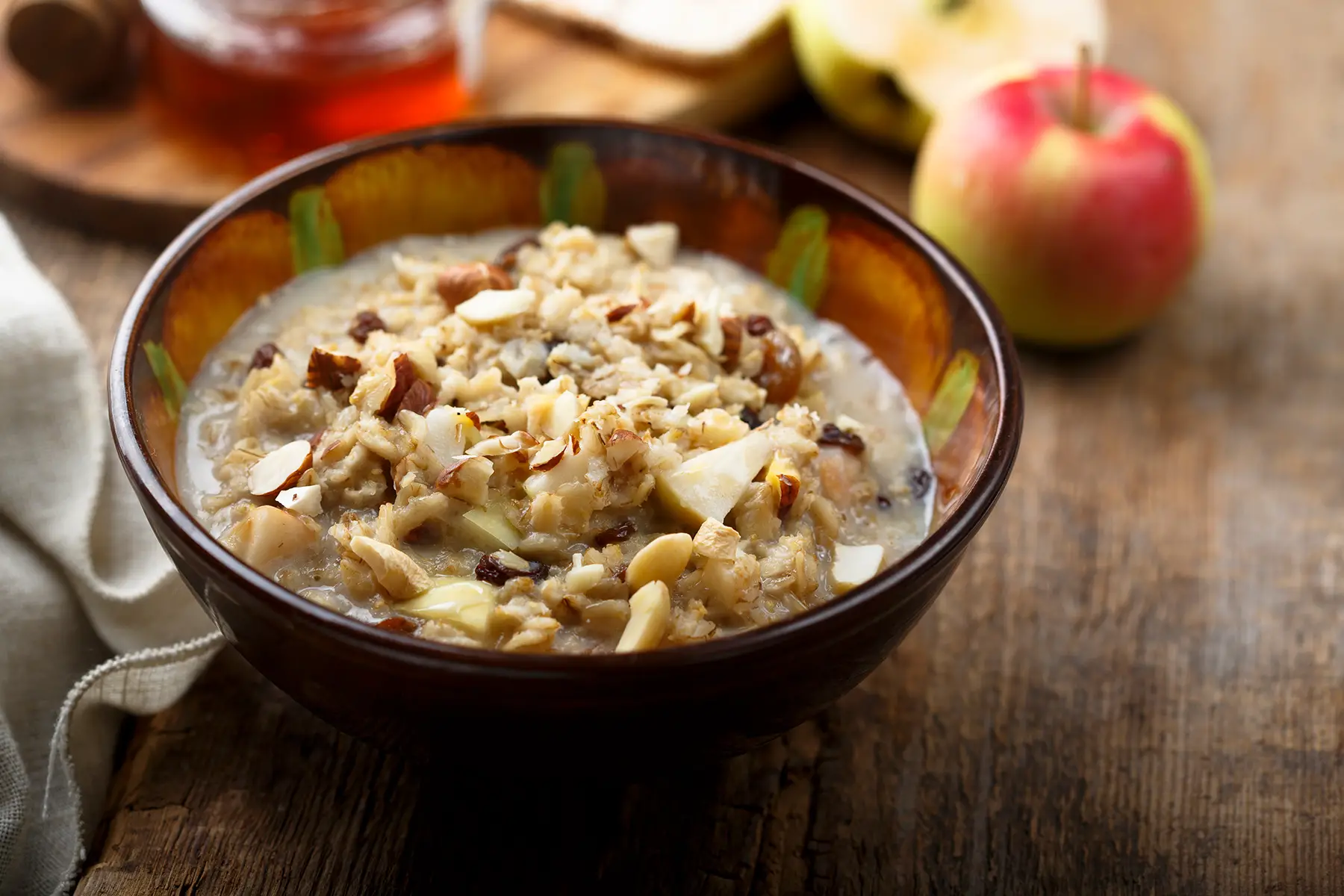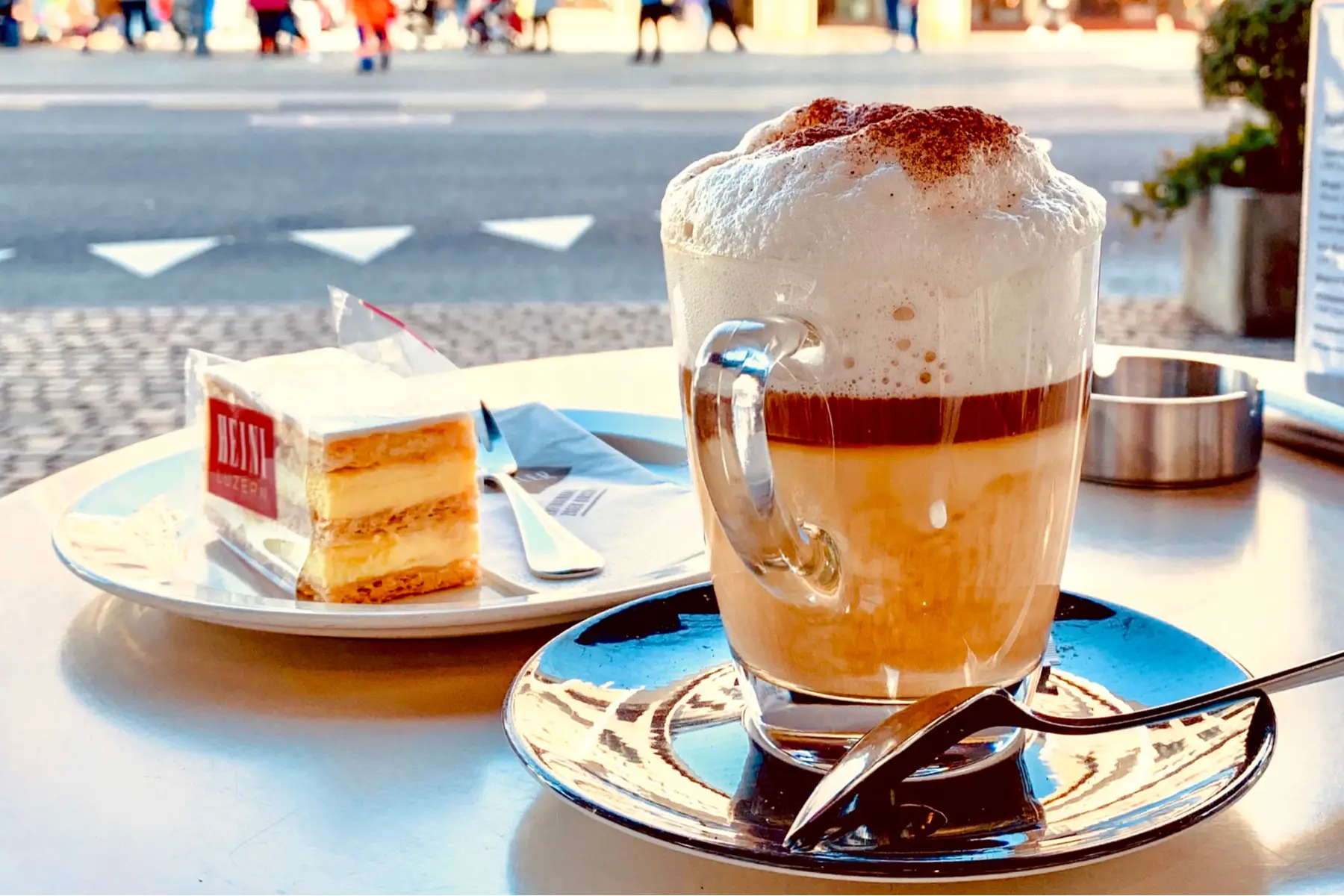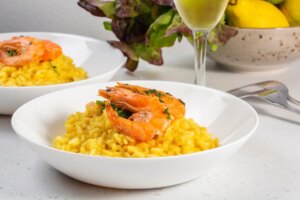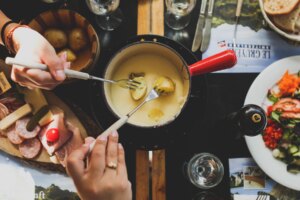In most of the world, the phrase “Swiss cuisine” often means just two things: cheese and chocolate. However, while these are two integral parts of the country’s culinary landscape, there is far more to it than this. In fact, Swiss cuisine is very diverse, with each canton drawing influences from the countries just across the border.
Because of this, you may find French-style dishes in Geneva and Neuchâtel, German-inspired plates in Zurich, and Italian-influenced bites in Ticino. In addition to these international influences, local wine and spirits are integral parts of drinks in Switzerland, too.
To help you navigate the smorgasbord of Swiss cuisine, this guide covers the following topics:
HelloFresh
Get a taste for Swiss cuisine by bringing restaurant-quality flavors into the comfort of your own home. HelloFresh provides fresh and innovative recipe boxes direct to your front door. Choose from a wide range of colorful meals from Switzerland and beyond that are perfect for taking your meals to the next level. Get more from mealtime with HelloFresh
An overview of Swiss cuisine
Cheese and chocolate are a major part of Swiss cuisine, and for good reason – the country really does them well. However, Switzerland offers a lot of regional diversity and this is reflected in its food scene. And, although the Swiss diet relies heavily on unhealthy ingredients like cheese and meats, it has plenty of healthy options, too.
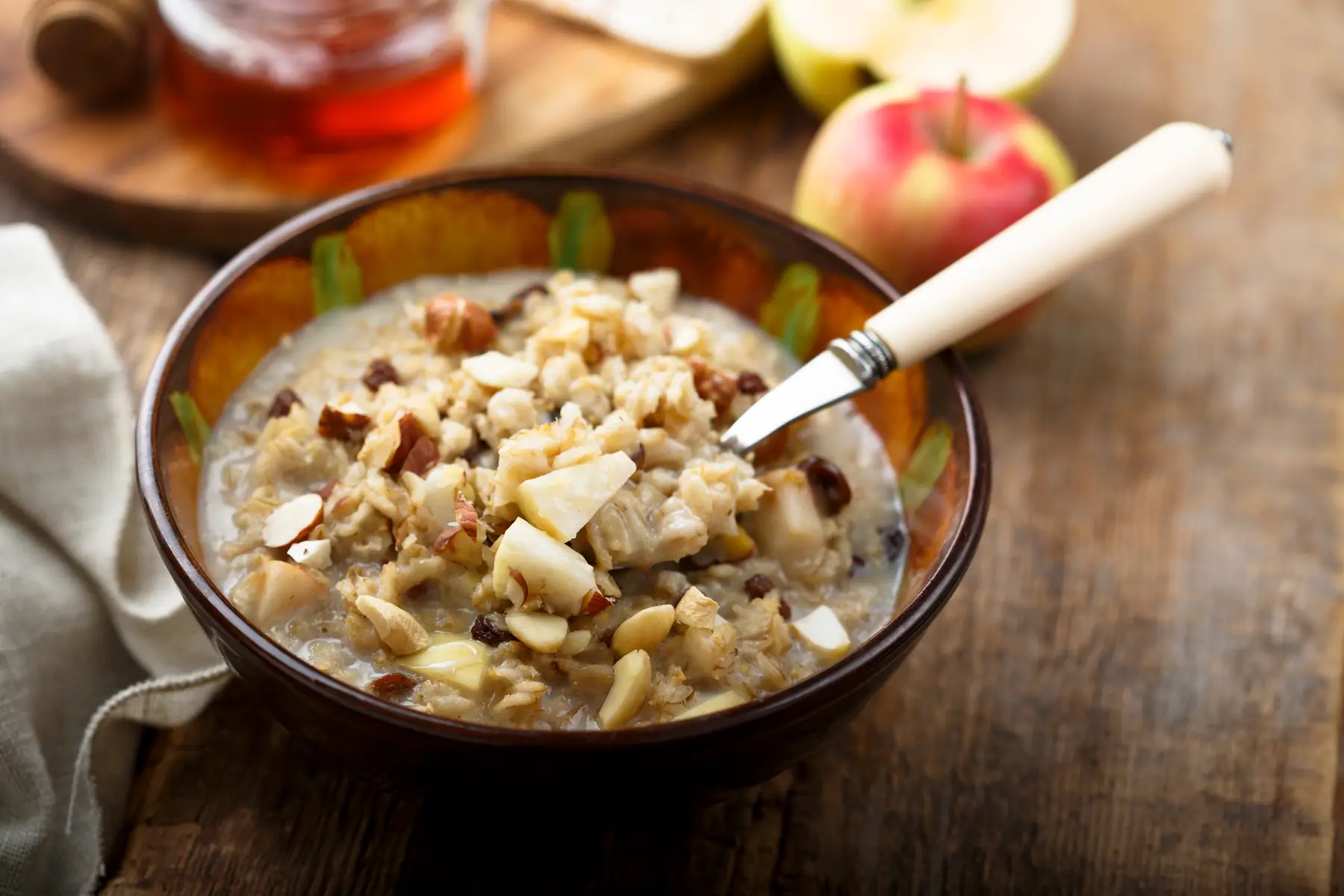
As such, Bloomberg’s Global Health Index for 2020 ranks Switzerland as one of the top five healthiest populations based on factors that include malnutrition, obesity, and access to clean drinking water. Oxfam also ranks Switzerland highly for its “plentiful, nutritious, healthy, and affordable diet” in its Good Enough to Eat index. This is largely thanks to dishes like Bircher müsli – invented by the Swiss doctor and nutritionist Maximilian Bircher-Benner – and an abundance of fresh fruit.
The Kulinarisches Erbe der Schweiz (the association responsible for the Culinary Heritage of Switzerland), has been the guardian of Swiss cuisine since its founding in 2004. As the name implies, the association keeps records of all the country’s traditional foods. As such, it details the characteristics, production, and history of the country’s classic dishes.
Mealtimes in Switzerland
A day of eating in Switzerland is punctuated by five distinct meals – Zmorge (breakfast), Znüni (a mid-morning snack), Zmittag (lunch), Zvieri (a snack “at four”), and Znacht (dinner). Dining in Switzerland may also include some very particular table manners.
Breakfast in Switzerland
The word Zmorge combines two Swiss-German words – zu (meaning “to” or “at”) and Morgen (meaning “morning”) to describe breakfast. Most Swiss people enjoy their first meal of the day before 08:00 and it is usually a family affair. As such, business breakfasts are not a part of Switzerland’s working culture.
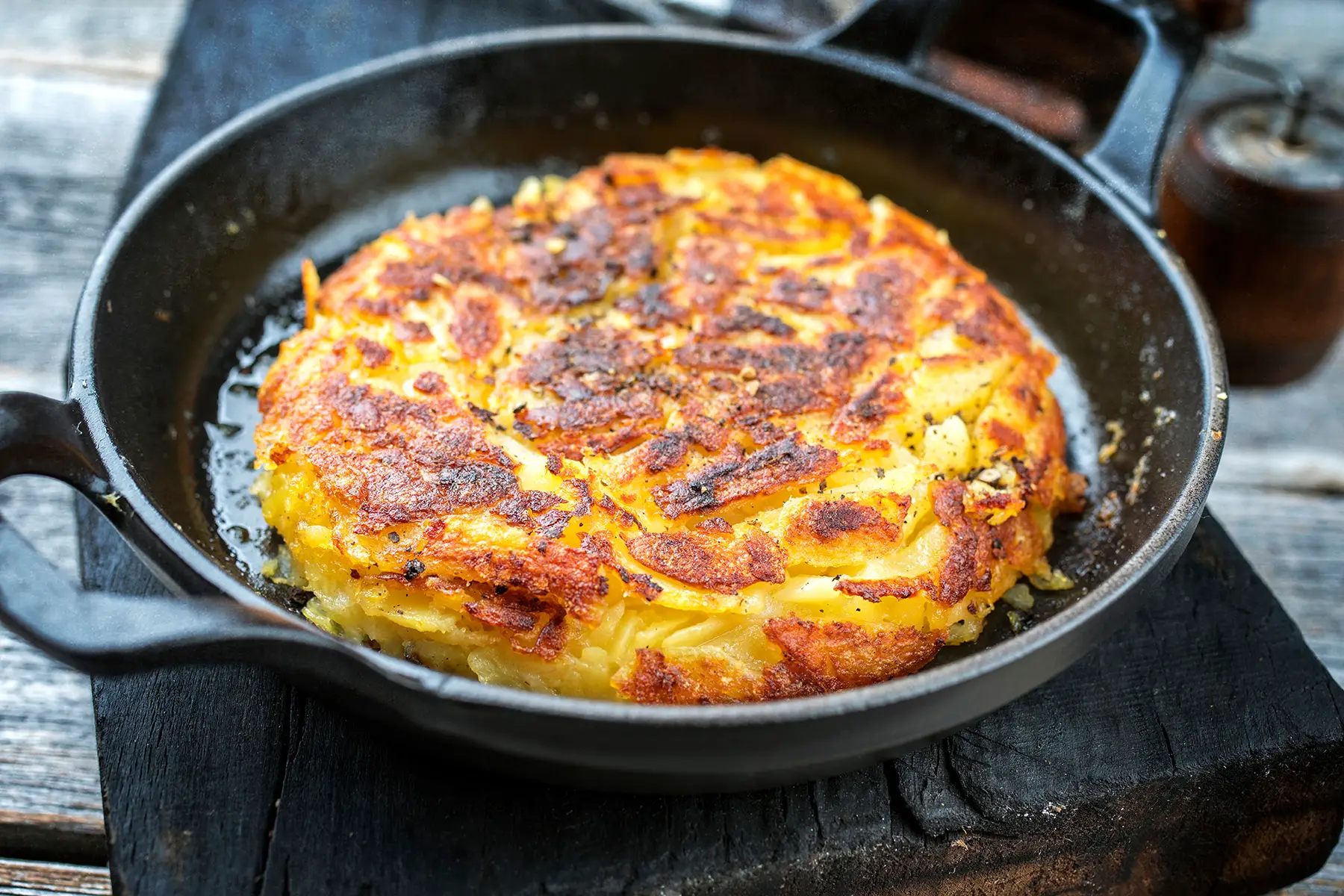
Because they are often rushing to get to school or work, most Swiss people enjoy a rather simple breakfast at home on weekdays. This might include a bowl of cereal or muesli, or perhaps some bread and jam, and certainly a cup of coffee or tea. On weekends, however, Zmorge is a more lavish affair. As such, locals might opt for a Swiss Sunday brunch at 09:00 that includes eggs, ham, and cheese. The meal might also be rounded off with some grated potato pancakes (rösti) or a buttery plaited loaf called zopf. You can read more about these in our Guide to the top 10 Swiss foods with recipes.
Lunch in Switzerland
Zmittag is a Swiss-German word that translates to “at noon” and is the Swiss equivalent of lunch. Since lunch is the main meal for most locals, this is also where Swiss cuisine really shines. Most people in Switzerland enjoy eating lunch at exactly 12:00 and this is usually a hot meal. It might also be quite international. In fact, because of the array of culinary options available in the country, a Swiss mid-week lunch might even be pizza, Thai food, or Chinese. Lunch is also a sacred time in Switzerland. As a result, many children have two hours off from school so they can go home to eat lunch with their families. This quiet time is also seen as a period for relaxation, where loud music, noisy chores, and phone calls are impolite.
Dinner in Switzerland
The Swiss-German word for dinner, Znacht, is another combination of zu (at) and Nacht (night). Because Swiss lunches are generally hot, heavy meals, dinners tend to be much lighter, cold meals. People in Switzerland also eat dinner far earlier than in other European countries, usually between 18:00 and 19:00. Generally, a Swiss dinner might consist of bread sliced at the table, paired with cheese, cold cuts, jam, and honey. This is not a hard and fast rule, however, and busy urbanites often find themselves heating up leftovers for dinner, instead.
Snacks in Switzerland
Two of the five meals that make up the daily Swiss diet look more like snacks than full-on feasts. Znüni – which means “at nine” – is the mid-morning meal and is often eaten around 09:00. The mid-afternoon snack –Zvieri, which means “at four” – is usually eaten between 15:00 and 17:00 to tide people over until dinner.
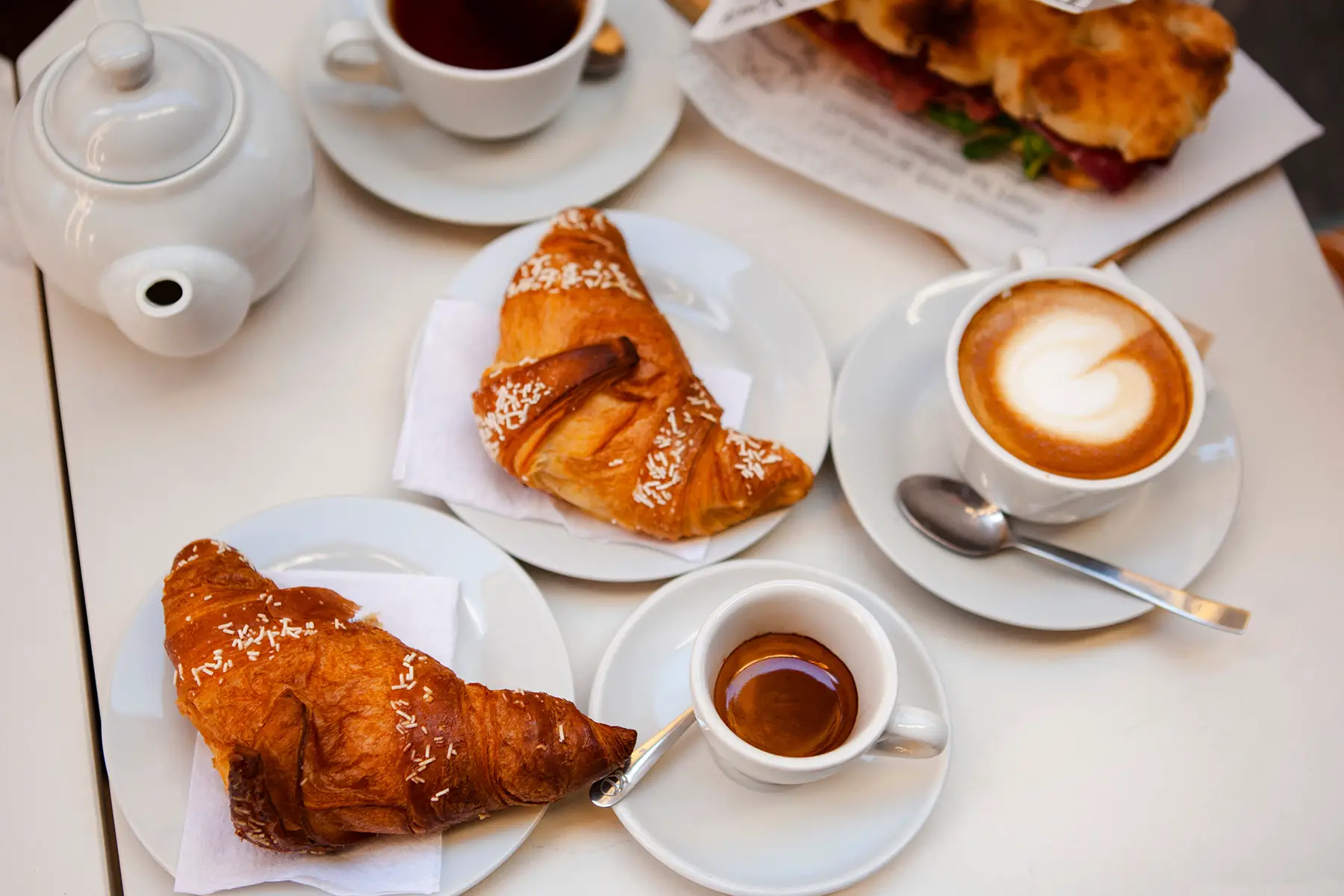
Znüni is a common part of Swiss culture and is often eaten in schools, offices, and at home. Although some people prefer to have croissants and coffee, others opt for healthier alternatives such as fresh fruit. Afternoon snacks, on the other hand, tend to vary by season. As such, they might include ice cream or berries in summer, and nuts, cookies, and warm beverages like coffee or tea in winter.
Special meals in Switzerland
Christmas dinner
The is a wealth of traditions during Christmas in Switzerland, including all sorts of different foods and snacks. For example, you may find yourself snacking on Grittibänz (an “Advent Man” made of bread), Lebkuchen (spiced honey cookies originating from Germany), and Pain d’Epice (a spiced bread similar to the Italian Panettone). For Christmas dinner, however, your meal may differ depending on which region of Switzerland you are in.
That said, the meal is always eaten at night on Christmas Eve, and leftovers are consumed on Christmas Day. Generally, you can expect things like Filet im Teig (a pork fillet filled with sausage meat wrapped in pastry), the popular Fondue Chinoise (a Chinese-style meat fondue), or Schinkli im Teig (hot ham wrapped in pastry); all with potato salad on the side. Of course, you will wash this all down with vin chaud (hot mulled wine) or Glüwein.
Epiphanies cake
Because many Swiss people celebrate the Christian tradition of Epiphany, you can find Dreikönigskuchen – Three Kings Cake – almost everywhere in Switzerland in January. This is because these bread-like cakes, which are full of raisins and citrus flavors, are eaten 12 days after Christmas to mark the day that the baby Jesus received his gifts from the Three Wise Men.

National Day food
1 August is National Day in Switzerland and many locals take this opportunity to indulge in national foods they don’t often eat. For example, they might enjoy Augustweggli buns with lashings of Ticino honey for breakfast. Throughout the rest of the day, regional cheeses, meats, and rösti might also make appearances. For extra patriotism, the meals are usually paired with Rivella soda, or perhaps some local beers.
Ingredients in Swiss cuisine
Because of its central position in the heart of Europe, much of Swiss cuisine takes cues from the culinary traditions of the surrounding countries. As such, core ingredients include bread, cheese, and meats; of which there are many varieties and preparation methods throughout the country. Furthermore, thanks to an abundance of delicious fresh fruit and world-class chocolate, many local desserts incorporate a variety of home-grown berries for natural sweetness, as well as locally-made chocolate.
Meat in Switzerland
Although Swiss meat is among the most expensive in the world, many local recipes and regional specialties still call for it. Pork, sausages, and cold cuts are also common throughout the country. Furthermore, each Swiss canton has its own unique meat dishes, including the following:
- Graubünden in the east is famous for its thinly-sliced, air-dried beef called Bündnerfleisch
- OLMA barbecued Bratwurst comes from a food fair in the northeast city of St. Gallen, and it is actually rude to eat it with mustard
- In the capital of Bern, the Berner Platte (platter) might include a mix of smoked pork belly, pork chops, and pork shoulder with tongue sausage, beef tongue, and pigs ears or tails
- Zurich is famous for its Zürcher Geschnetzelte, a veal dish with mushrooms and cream sauce
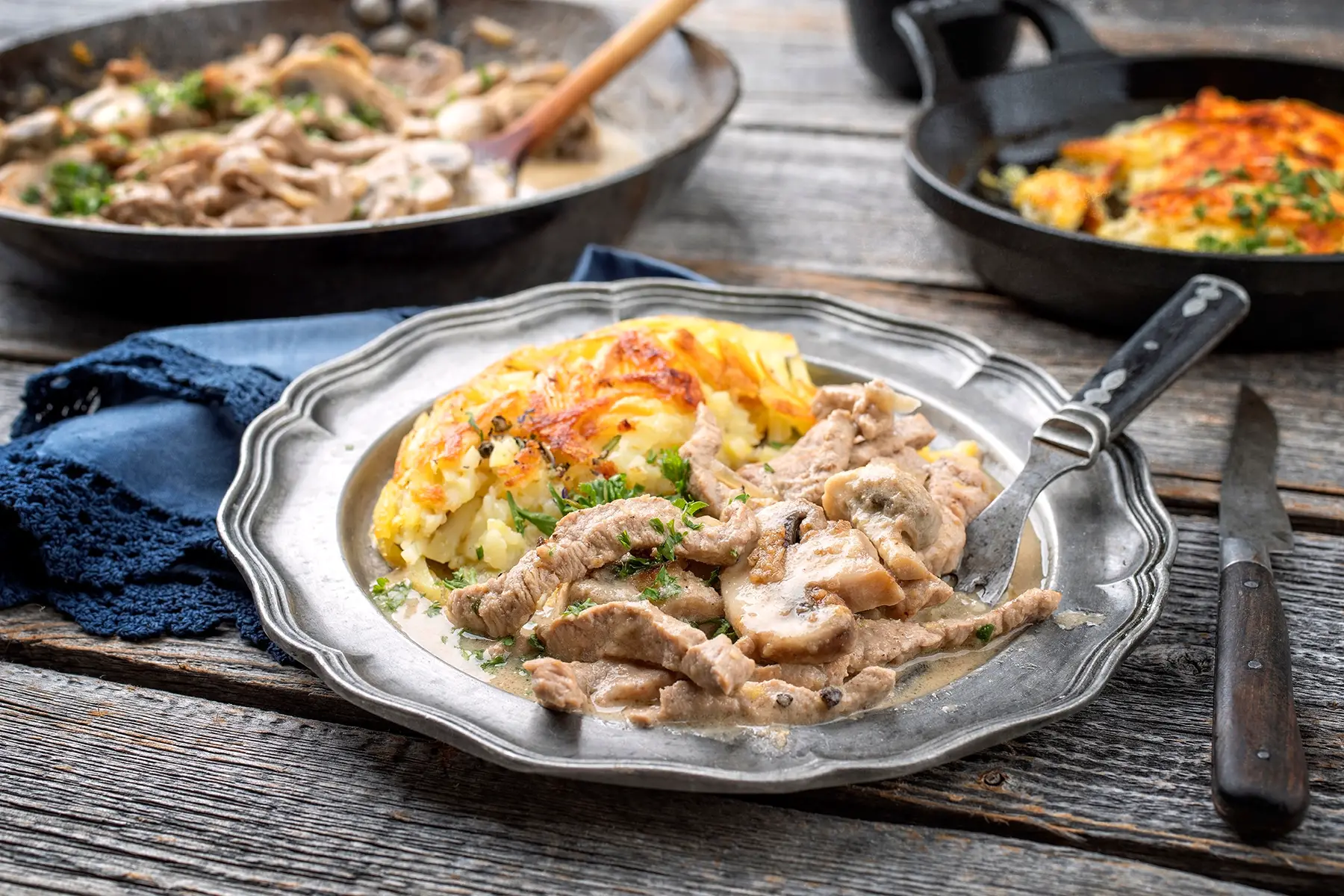
- Switzerland produces around 160 million cervelat sausages a year, and these are usually roasted over an open fire
- Italian-speaking Ticino offers a wealth of homemade meat specialties, including Luganighe and Luganighetta, which are particular types of local artisanal sausage
Fish in Switzerland
Although Switzerland is a landlocked country, its many lakes provide plenty of fish for local cuisine. In fact, each year, nearly 2 million kilograms of fish are caught in the country’s biggest six lakes – Geneva, Neuchâtel, Zurich, Constance, Bienne, and the Four Lakes. That said, these lakes don’t offer a wide variety of fish. Nevertheless, several types of freshwater fish are available, including whitefish, perch, pike, roach, trout, and char.
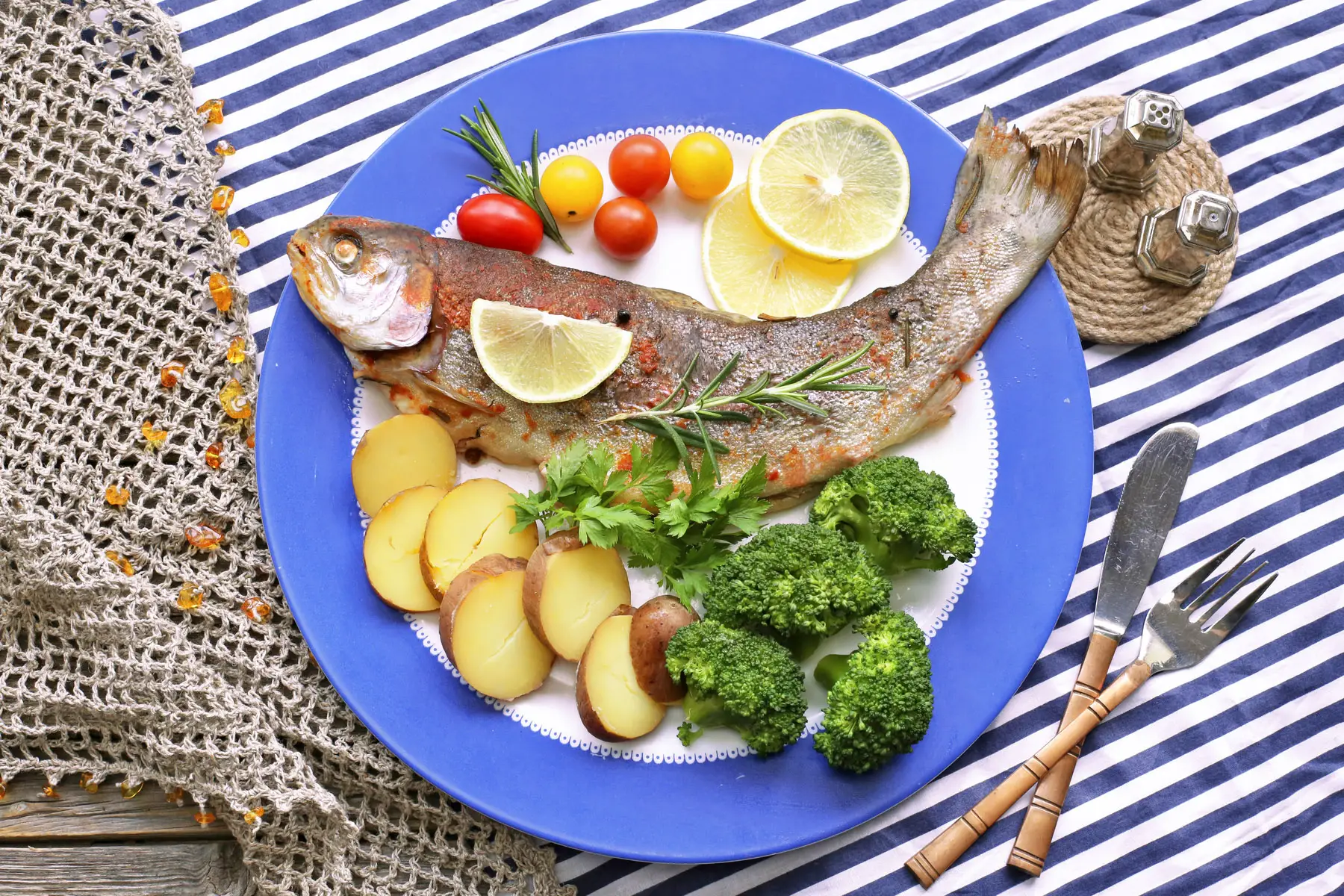
There are many ways to prepare fish in Switzerland, and these differ by canton. For example, in Fribourg, there are over 30 ways to prepare trout, but one of the most popular dishes is Truite au Bleu (blue trout), which is where the trout is prepared with blue skin and served with vegetables. Conversely, in Murten, you can enjoy Saibling (another type of trout) as a filet served on a ratatouille crêpe. Then, there is Basel-style salmon, which is similar to Japanese sashimi, and char tartare with potato crisp.
Vegetables in Switzerland
Because of a growing interest in healthy and sustainable farming, fresh, organic vegetables are plentiful in Swiss supermarkets and farmer’s markets. Seasonality is also important in the country. As a result, the availability of vegetables is very much subject to the seasons. For example, you may get white asparagus (asperges blanches, weißer Spargel, asparagi bianchi) and radishes (des radis, radieschen, ravanelli) in the spring or pumpkins (citrouilles, kürbisse, zucche), squash, and carrots (les carottes, die karotte, carote) in autumn. You will also see vegetable pop-up stands at Swiss Christmas markets.
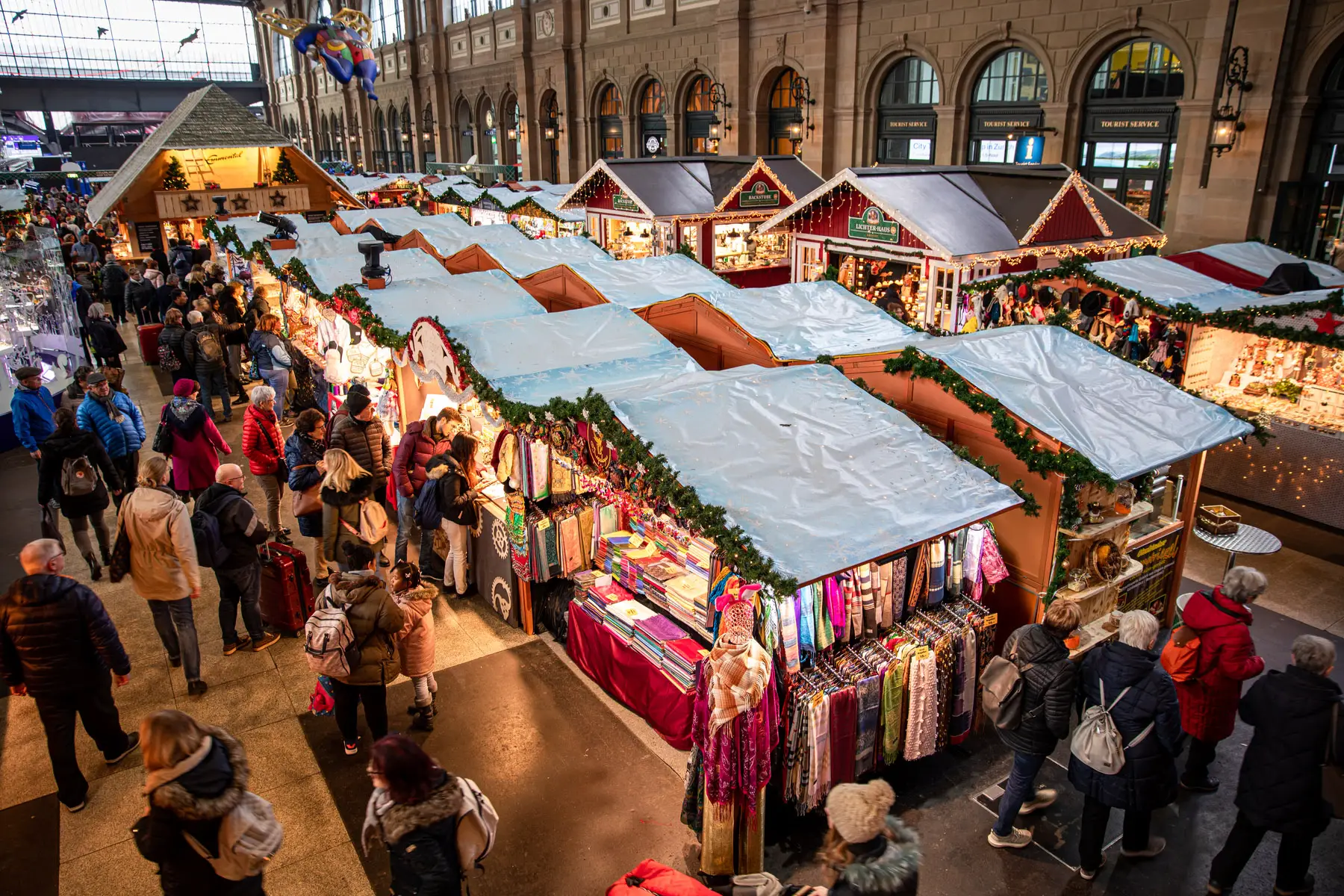
Among the most popular locally-grown vegetables in Switzerland are carrots, celery, beetroots, cabbage, and onions. Many of these are put to good use in regional Swiss dishes, including the following:
- Rösti – an iconic Swiss dish made of potatoes that have been thinly sliced and pan-fried
- Älplermagronen – a rustic example of Swiss cuisine that pairs macaroni pasta with vegetables such as onions and potatoes, and tops it off with plenty of local cheese
- Raclette – another popular local dish where hot slices of raclette cheese are smothered over small potatoes, onions, pickles, and vegetables such as cauliflower
- Zürcher Geschnetzeltes – a German-style ragout from Zurich, which features a white sauce made from mushrooms and white wine paired with veal or pork loin and rösti.
- Papet Vaudois – a hearty dish of leeks and potatoes from Vaud, which is often served with a cabbage sausage (Saucisse au chou)
Fruit in Switzerland
Again, because of its local agriculture industry, Switzerland produces many of its own fruits. However, due to its climate, it is not able to produce tropical or citrus fruits. As such, the country has to import fruits such as lemons and oranges (from Italy and Spain) bananas (from the Dominican Republic, Mexico, and Uganda), and mangoes and grapefruit (from Ghana).
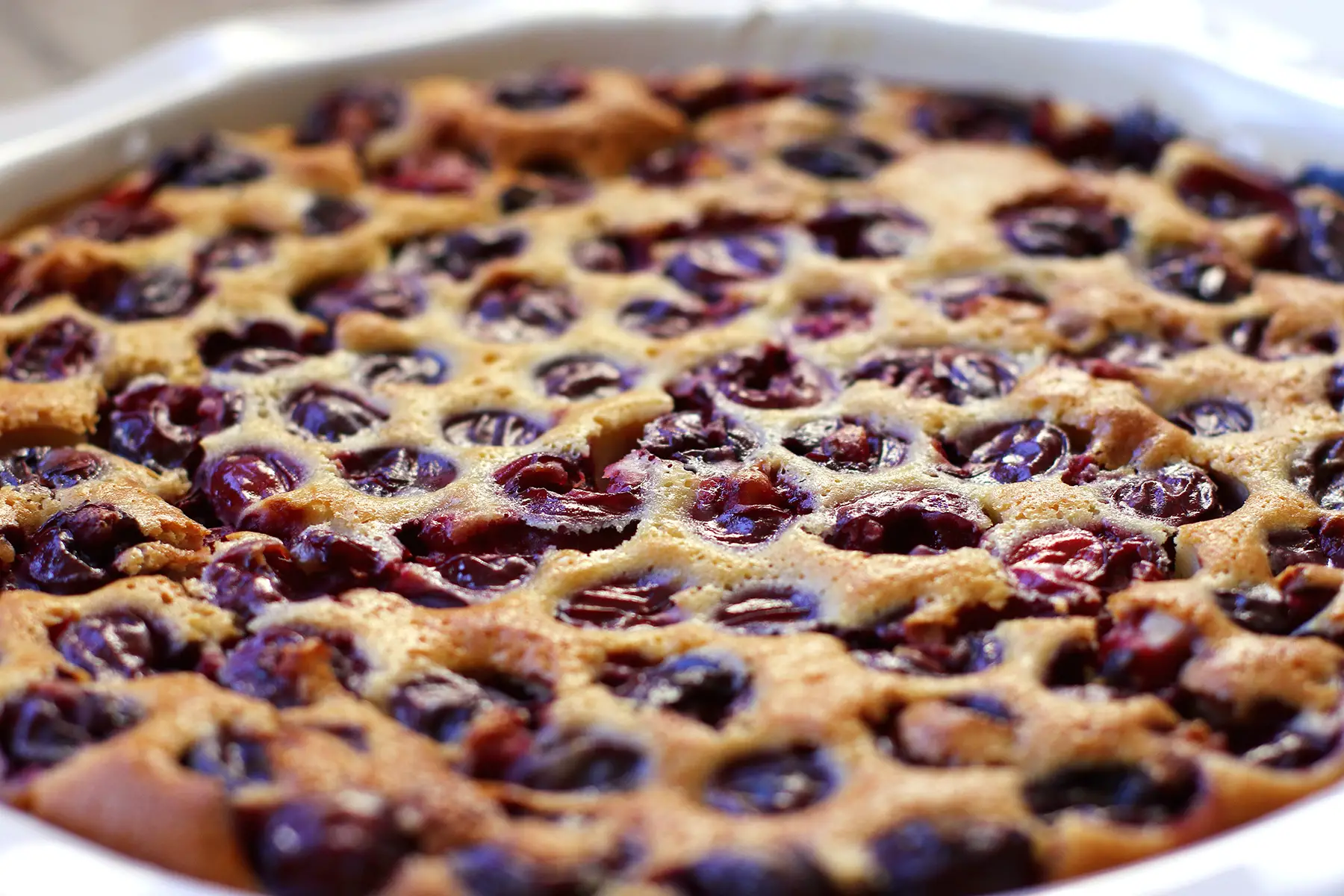
Although these fruits are all available in Switzerland, and locals do eat them, there are also some local fruits on offer, too. Apples are the most readily available, but apricots, pairs, cherries, and plums are also common. Swiss summer fruits, such as blackberries, strawberries, blueberries, and raspberries, are also popular. Although Swiss people often enjoy eating fruit by itself, they also like to add it to local desserts, including the following:
- Apfelküchlein – a type of warm or cold fried apple cookie, which is often served with a vanilla sauce
- Bircher muesli – lemons and apples are part of the original recipe created by Dr. Bircher-Benner, but summer fruits like blueberries and strawberries are also commonly added
- Chriesiwähe – a German-style cherry tart that is popular in German-speaking cantons
- Zürcher Öpfelchüechli (Zurich apple fritters) – a treat that you will find at every Swiss Chilbi (funfair) in Switzerland’s German regions
Carbohydrates in Switzerland
Bread is practically a national dish in Switzerland, although as far as carbs go, pasta and risotto may come a close second. In fact, there are more than 400 different types of bread on offer throughout the country. Of course, preferences differ by canton. German-speaking cantons, for instance, tend to prefer wholemeal breads, while other cantons opt for white breads. Pasta is also used in several traditional Swiss dishes. Here are some popular Swiss breads and pastas:
- St Galler brot – a traditional loaf that features a round knot and comes in two styles: either dark or halbweiss, a blend of flours for dark and white bread
- Basler brot – a popular bread from Basel, which is light, airy, and usually made from wholegrain flour
- Burebrot – a round loaf with a crispy crust that combines both rye and wheat flour
- Pane Valle Maggia – from Italian-speaking Lugano, which is made with rye, wheat, and a sourdough starter and pairs well with meats and olives
- Walliser roggenbrot – a rye loaf from Valais that often comes with additions such as walnuts or dry fruits
- Pane Ticinese – from the Italian canton of Ticino, is a plaited loaf that sports a nice gold crust thanks to an egg wash
- Hefekranz (or hefezopf) – a yeasty bread that is popular at Christmas and Easter and features a wreath-like shape and hints of raisins and lemon
- Spätzle – a type of pasta that is popular in German-style dishes
- Älpermagronen – a traditional Swiss Alpine pasta in which macaroni is the key ingredient
Cheese and dairy products in Switzerland
Cheese is a staple of Swiss cuisine and the country produces more than 450 varieties of it. Amazingly, the average Swiss person eats more than 20kgs of cheese a year. Of course, there are cheeses to meet every taste, which are all available in different forms, ranging from slices and heavy wheels to melted varietals that are perfect for fondue.
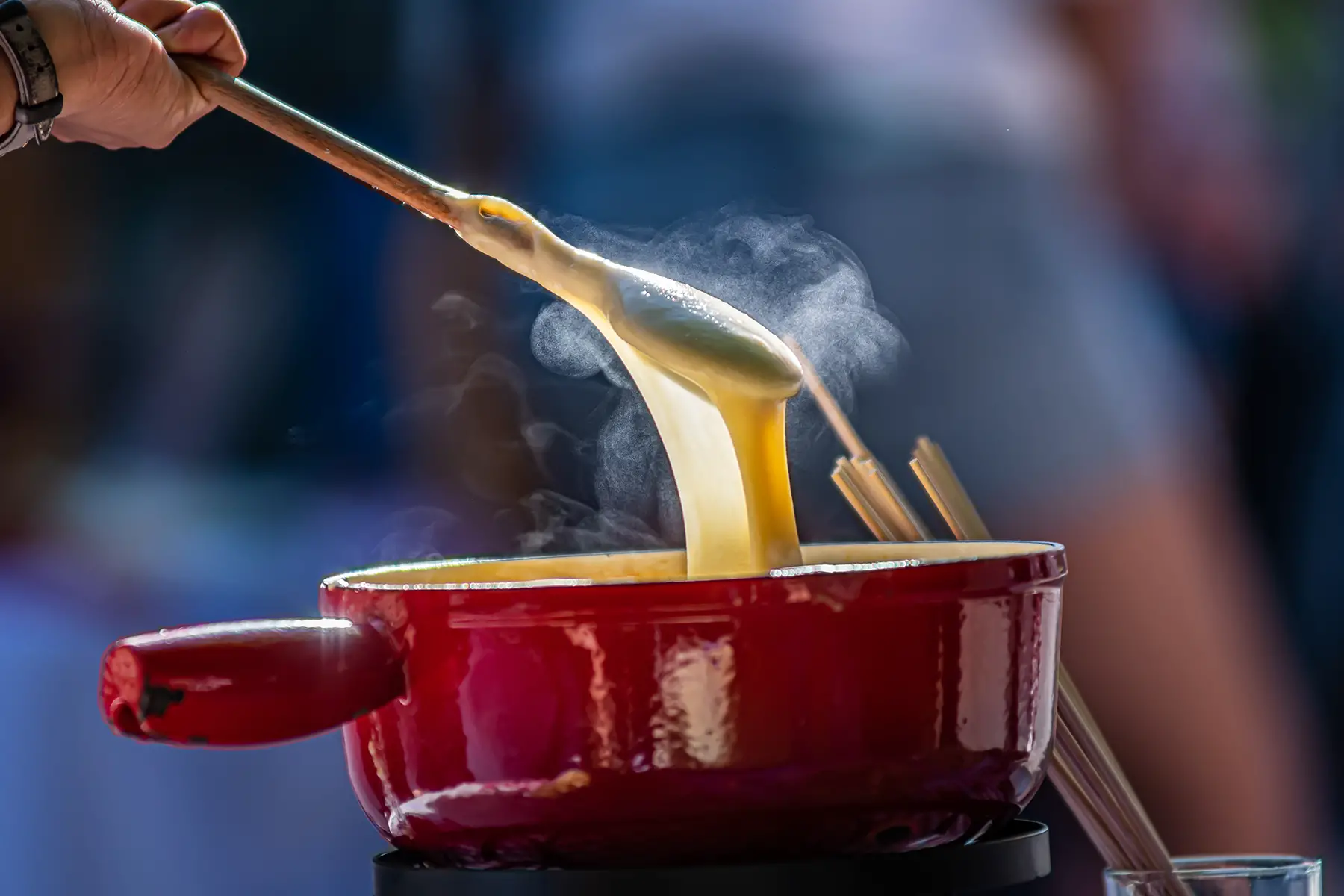
Because each Swiss canton produces its own particular type of cheese, there is a wide variety available throughout the country, including the following:
- Vacherin – a soft cow’s milk cheese available in several different styles
- Appenzeller – an aromatic hard cheese made from cow’s milk in the country’s northeast
- Sbrinz – a hard, full-flavored cheese that is common to central Switzerland and a good dupe for Italian-made Parmesan
- Emmentaler – a medium-hard cheese that is produced in Emmental, in the canton of Bern, and features characteristic holes
- Gruyère – the world-famous hard yellow cheese that is made in Switzerland’s French cantons
- Tête de Moine – an alpine cheese that was originally made by Swiss monks and is now served in the shape of rosettes
- Raclette – this is the main part of a raclette meal
Chocolate in Switzerland
If there is one part of Swiss cuisine that is known around the world, it’s chocolate. Although the sweet treat arrived in Europe in the 16th century, it wasn’t until the 19th century that the chocolatiers of Switzerland created the high-quality products that we know and love today. In fact, these days, Switzerland is one of the world’s biggest producers of chocolate. And although more than 70% is exported to other countries, the Swiss remain the largest consumer of the good stuff.
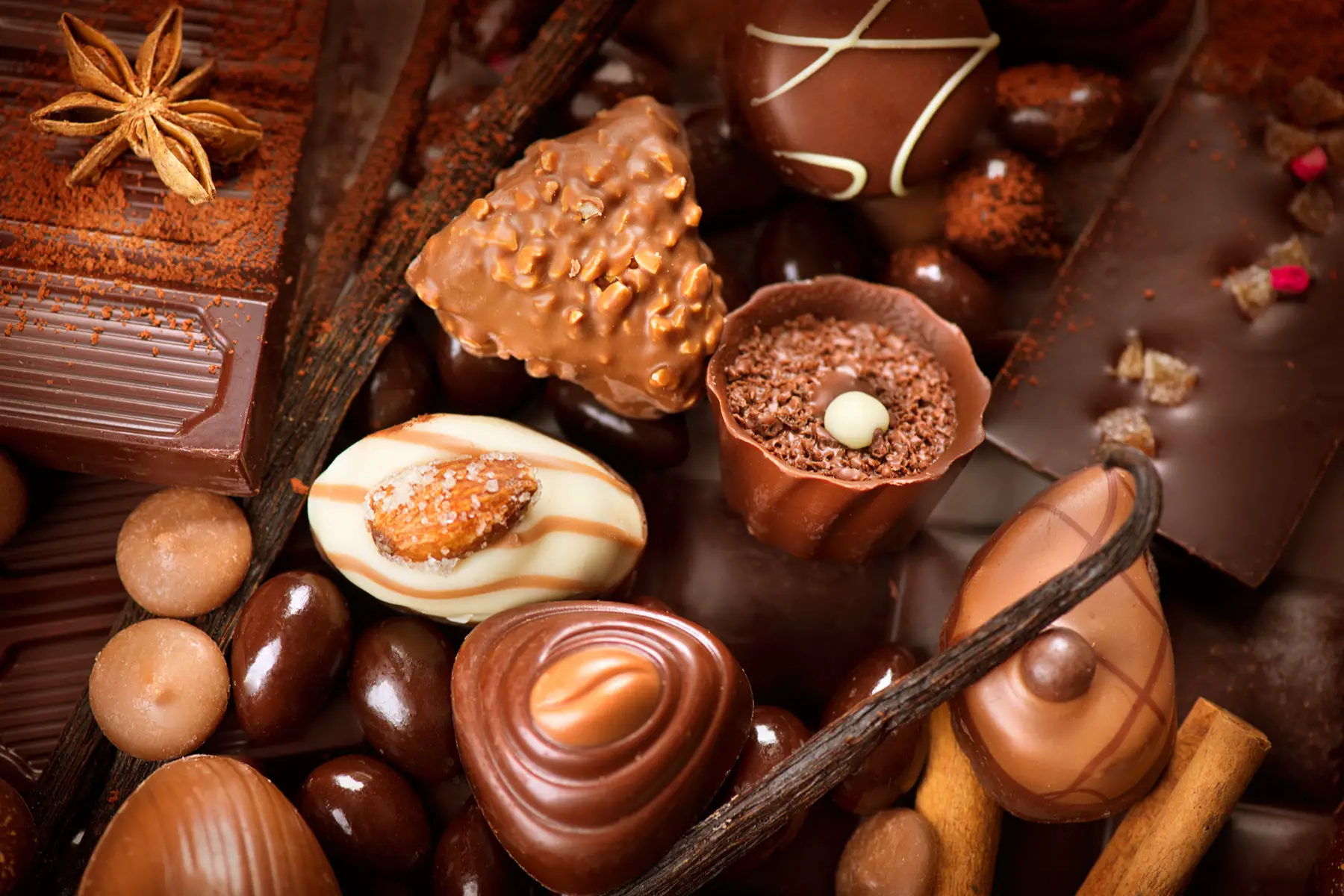
The history of Swiss chocolate is essentially a who’s who of the world of chocolate. It was first made solid by François-Louis Cailler, who later created the popular chocolate bar. Later, Philippe Suchard – still one of the biggest names in Swiss chocolate – created a grinding machine, the mélangeur, which is still used today, and first took Swiss chocolate overseas. Then there was Daniel Peter, who created milk chocolate, and Rodolphe Lindt – another world-famous name – who created chocolate fondant. In the 20th century, Switzerland also produced Toblerone, the iconic triangular chocolate bar made with nougat.
If you need a chocolate hit, then these are the Swiss brands to go for:
- Auer
- Chocolate Frey
- Gottlieber
- Läderach
- Max Chocolatier
- Du Rhône Chocolatier
- Sprüngli
- Teuscher
Herbs and spices in Switzerland
You might not expect Swiss cuisine to include a lot of spice, but there are a few that every local keeps in their kitchen. Knorr Aromat Seasoning, for example, is a unique blend of herbs and spices that can be used in a wide range of dishes. As such, it is a staple of Swiss households. The globally popular Maggie Bouillon Cubes, which were actually invented in Switzerland, are also commonly used for making soups and broths.
You will also find that Swiss cuisine often uses the following herbs and spices:
- Wild alpine garlic
- Marigold
- Basil
- Peppermint
- Rosemary
- Thyme
- Wild marjoram
- Tarragon
- Nutmeg and cloves
- Parsley
- Garlic
- Red pepper
- Red onion
- Cumin
The most famous dishes in Switzerland
Swiss cuisine draws on the influences of its surrounding countries. As such, its most famous dishes take inspiration from German, French, and Italian culinary traditions. If you want to sample typical Swiss cuisine, then these are the dishes you should try:
- Fondue – the Swiss Cheese Union gets at least some credit for establishing bread on skewers dipped in melted cheese as a national dish
- Raclette – this national dish features melted cheese with jacket potatoes, gherkins, and often a selection of vegetables or fruit
- Landjäger – a traditional semi-dried sausage
- Älplermagronen – an alpine dish made with gratin potatoes, macaroni, cheese, onion, and usually apples
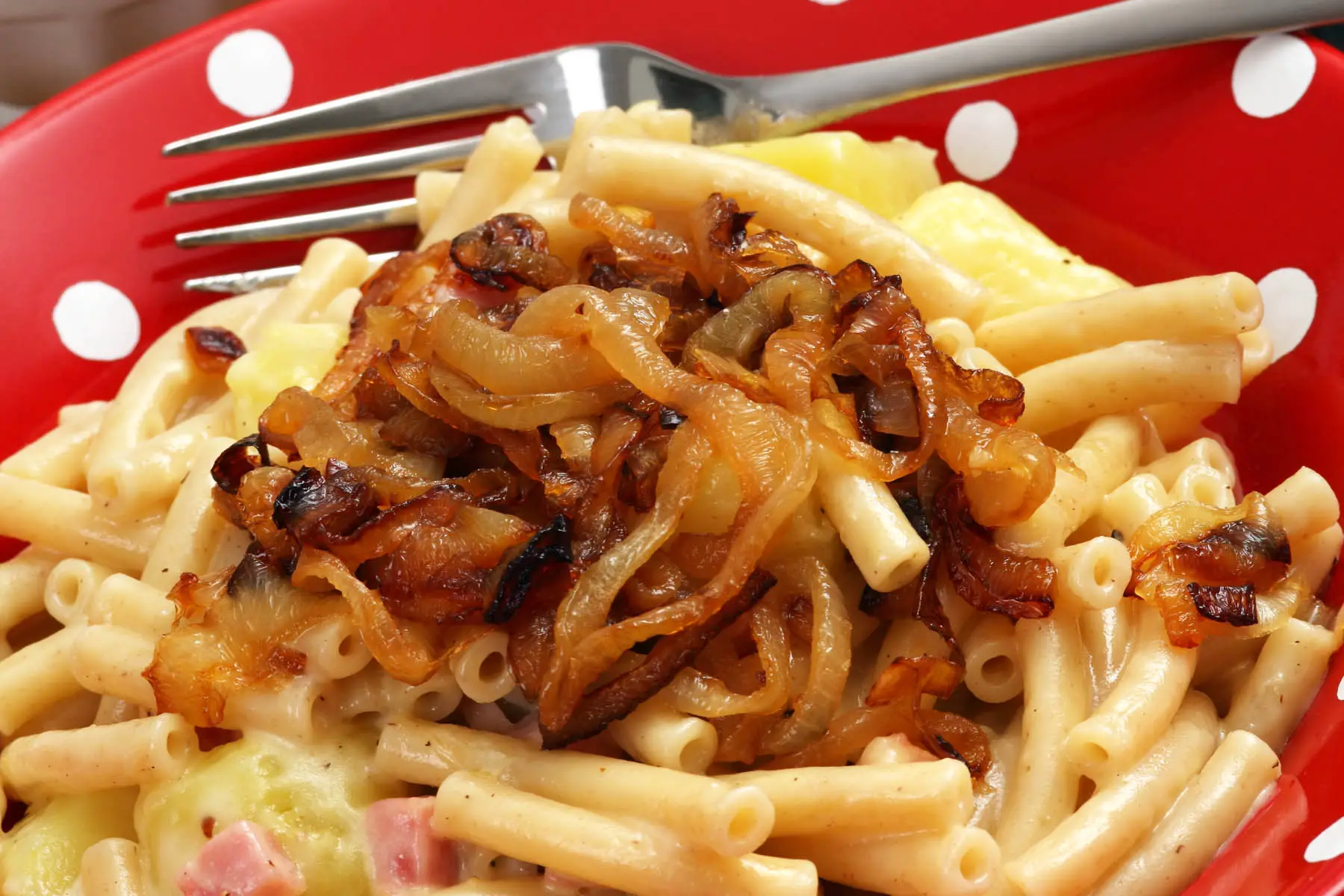
- Rösti – the famous grated, fried potato dish that accompanies many mains
- Saffron Risotto – a traditional dish from the Ticino region, which often comes with a local Luganighe sausage
- Malakoff – a fried cheese ball that is typical of western Swiss cuisine
- Papet Vaudois – an earthy stew of leeks and potato that is native to Vaud
- Tartiflette – a rustic dish that features thin slices of potato, bacon, onion, and smooth Reblochon cheese, and is popular in ski resorts
The most famous desserts in Switzerland
Swiss cuisine is arguably as famous for its delicious desserts as it is for its hefty mains. The abundance of fresh fruit in the country, plus the Swiss tradition of chocolate-making, combine to form the heart of many of the nation’s favorite desserts, including the following:
- Torta di Pane Ticinese – a type of bread-and-butter pudding that is native to the Ticino region
- Bünder Nusstorte – essentially the Swiss answer to pecan pie, this tart, which originates in Graubünden, features shortbread pastry and is stuffed with nuts and caramel
- Zuger Kirschtorte – this layer cake, which is native to Zug, is so famous that even Charlie Chaplin and Audrey Hepburn have tried it. It is made with sponge cake, buttercream, nut meringue, and heavy lashings of cherry brandy (Kirschwasser)
- Wähe – a popular local fruit tart that is made with in-season fruits, often plums, apricots, rhubarb, or apple
Regional differences in Swiss cuisine
Although some dishes are popular throughout Switzerland, each Swiss canton has its own regional favorites which are often part of its particular cultural heritage. German-speaking cantons, for example, feature many German-style dishes, while Italian-speaking regions have dishes that are heavily influenced by Italian cuisine.
Romandie (French-speaking Switzerland)
In the French-speaking parts of the country, Swiss cuisine draws heavily on the culinary traditions of France. Because of this, cheese and meats are very popular. Fondue, for example, is popular in Geneva, while Croûte au fromage (a type of cheese on toast) is popular in Valais. Similarly, sausages (saucissons, in the local dialects) are often part of local dishes such as Papet Vaudois.

Due to the presence of several lakes in this part of Switzerland, some types of fish are popular in Romandie, too. For example, you can often find powan, trout, or perch on the menu. In addition, there are numerous regional specialties, including desserts and condiments. For instance, you might try a cream tart (gâteau du Vully) or a local sweet variety of mustard (moutarde de Bénichon).
St. Gallen
Meat is a key part of Swiss cuisine, and St. Gallen’s contribution is the OLMA Bratwurst. In fact, this sausage is so popular that it is widely available throughout Switzerland for barbecues. Just don’t make the fatal faux pas of eating it with mustard or a fork and knife! In St. Gallen, real connoisseurs know that it is best eaten fried with rösti and topped with onion sauce. Aside from the Bratwurst, the St. Galler Schüblig sausage is also popular throughout the country.
Appenzellerland
This region’s contribution to Swiss cuisine is the famous Appenzeller cheese and its related dishes, such as cheese tarts. However, the canton is also famous for its local sausage, which is scalded, as well as biberli, a type of gingerbread that has a picture pressed into it. The region also supplies its famous Alpenbitter (an aromatic liqueur) throughout Switzerland.
Basel
If you are in Basel, be sure to try its most famous dish, the Basel flour soup (Basler Mehlsupper). Featuring just six ingredients – including flour, beef stock, red wine, and Gruyère cheese – this is a popular indulgence at the canton’s Fasnacht carnival. Other regional specialties include the beloved Basler Läckerli gingerbread cookies, Mässmogge sweets filled with a hazelnut paste, and surprisingly, sour liver strips called Suuri Lääberli.

Bern
Switzerland’s capital is certainly sustainable when it comes to consuming meat and doesn’t shy away from using all parts of the animal. In fact, the traditional Berner Platte is a heaping dish that features everything from beef tongue, pork shoulders, pork knuckles, pigs’ ears and tails, tongue sausages, and so much more. This is all served with sauerkraut, boiled potatoes, and other vegetables.
If that doesn’t quite float your boat, though, then you may want to try the local onion tart, the Zibelechueche. For a sweet treat, on the other hand, you can sink your teeth into a Berner Haselnusslebkuchen (hazelnut gingerbread) which features honey and cinnamon.
Zurich and Zug
One of the most popular dishes in Swiss cuisine is Zürcher Geschnetzelte, a stew-like meal of veal topped with a creamy mushroom sauce and paired with a side of rösti. The local chocolate wafer biscuits, Hüppen, are also popular throughout the country. At Christmas, however, locals indulge in Tirggel, a dry biscuit made with honey.
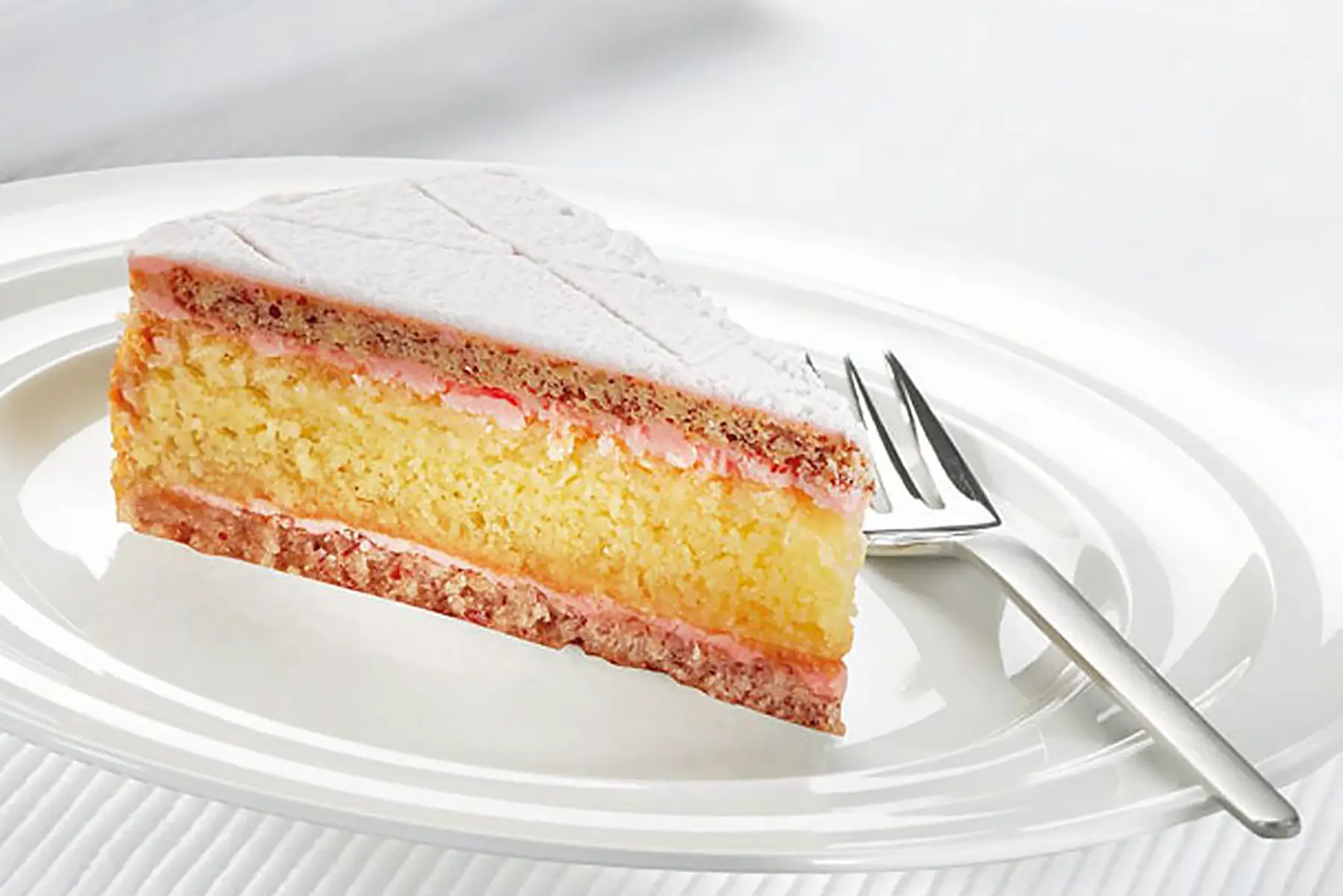
The local go-to dessert in Zug is the Zuger Kirschtorte, a rich layer cake. To make it, biscuits are soaked in kirsch (a clear, colorless brandy traditionally made from the double distillation of morello cherries) then bookended with two layers of meringue and buttercream. This creates a delicate, crunchy delight.
Central Switzerland
A specialty of Alpine Swiss cuisine, Älplermagronen originates in central Switzerland but is now popular in ski resorts throughout the country. For something a bit more native, though, you can try the Luzerner Chügelipastete. As the name suggests, this dish is from Lucerne and features a vol-au-vent pastry filled with meatballs drowned in a white sauce. The local Hafenchabis and Stunggis stews (both made with a combination of pork and vegetables) are also very popular.
One of the most popular Swiss cheeses, Sbrinz, is also produced in the country’s heartland. It is a hard, full-fat cheese and, therefore, a good substitute for Parmesan. However, it is quite hefty and is produced in wheels that can weigh up to a whopping 45kgs. That said, most cheesemongers will gladly cut it up nicely for you.
Ticino
Polenta, a northern Italian dish made of coarsely ground corn, is the star ingredient of Swiss cuisine in the Italian-speaking canton of Ticino. As such, it is often served as a snack with cheese or as a main dish with a meat accompaniment.

Similar to many other parts of Switzerland and Europe, chestnuts are very popular during the winter months in Ticino. In fact, they get a sweet makeover in the form of Marroni. These sweet treats are available in various forms. For example, you might eat them roasted, or as Vermicelli, a Swiss dessert made from chestnut puree. However, the popularity of the humble chestnut extends even further in the canton. Because of this, you can find a wide array of chestnut products, including different types of bread, pasta, and chocolate. Another popular sweet snack in Ticino is Amaretti, which are small macaroons that are originally from across the border in Italy.
Ticino prides itself on its culinary heritage and won’t be outdone by the other cantons when it comes to cheese, either. Zincarlìn is the region’s famous fresh cheese, which is made with cow’s milk from the Valle di Muggio and laced with black pepper. Another mark of Ticino’s Italian influence is Gazosa, which is a non-alcoholic bubbly lemonade. In fact, the drink is so popular that there are now eight flavors, all of which can be found throughout Switzerland.
Useful resources
- Swiss info – article on The pioneers of Switzerland’s ‘Chocolate Revolution’
- My Switzerland – find more information about typical Swiss food
- Cheese from Switzerland – read more about the history of cheese in the country
- The Federal Council – discover interesting facts and figures about Swiss cuisine


